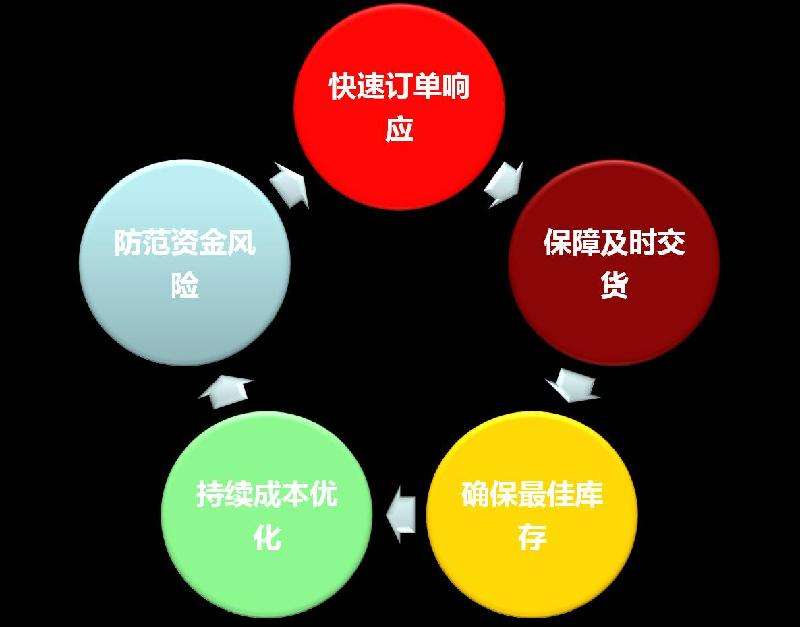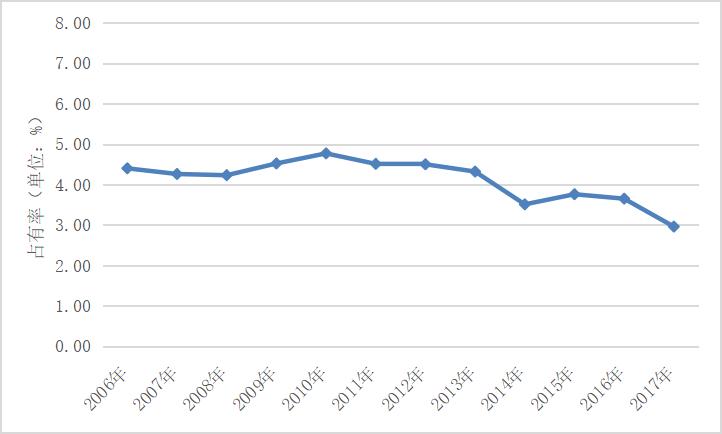苏ICP备112451047180号-6
公司资本认缴制下股东出资问题研究
摘要
公司资本制度的改革是2013年《公司法》修订的一大亮点,一改之前对股东出资的严格管制,取消最低注册资本额要求、取消货币出资比例限制、取消首次出资比例及出资缴纳期限的限制,还取消法定验资的要求。这些规定的取消表明,我国注册资本登记制度已由实缴制完全转变为认缴制。但由于诚信缺失、监管不足、对债权人保护不力等因素,致使在实施认缴制的过程中,发生很多的问题。因此,有必要从认缴制与股东出资的基本理论研究出发,对认缴制下存在的股东出资问题进行分析,学习国外的成功做法,结合我国《公司法》及其司法解释的规定,寻找解决问题的路径。除此之外,还需要建立健全相关配套措施,完善认缴制下股东出资法律制度。
文章主要可分为五部分:第一部分对认缴制与股东出资的基本问题进行系统论述,首先从宏观上理清公司资本制度与股东出资之间的关系,再介绍目前我国对股东出资的形式要求和义务要求,总结认缴制下股东出资所具有的特点,最后除了介绍认缴制的基本理论外,还总结了实施认缴制对股东出资所带来的影响。第二部分整理了股东在实际出资过程中已经出现的问题。认缴制下股东的出资规则有着巨大的改变,在充分保证公司章程自治的同时,也在出资数额、出资期限、出资评估、虚假出资和抽逃出资的认定、未实缴股权的转让等方面出现了诸多问题。为了在认缴制下更好地保证债权人的利益,这些问题必须尽快解决。第三部分通过研究不同资本制度下对股东出资的规定,学习各国为防范交易风险而建立的相关配套措施,希望对解决我国股东出资问题能够有所裨益。第四部分主要是针对第二部分归纳的相关问题,充分运用我国现有的法律规则,联系实际,提出解决问题的办法,具体说来包括:倡导理性设立公司、对出资期限自由的限制、明确错误评估的责任承担、虚假出资、抽逃出资行为的界定和处理、确定未实缴股东的股权转让效力。第五部分借鉴国外的成熟做法,在我国建立健全催缴制度、公司法人人格否认制度和信息公示制度,通过这三个制度的建立来完善认缴制下股东出资法律制度。
实施认缴制符合全球范围内公司资本制度改革的大趋势,有助于中国经济的发展。又因为我国正处于认缴制施行的初期阶段,所以会不可避免地出现很多问题,只要能够及时发现问题并妥善解决问题,或者通过建立相关制度防患于未然,认缴制在我国的发展前景仍然是值得期待的。
关键词:公司资本,认缴制,股东出资,债权人利益
ABSTRACT
The reform of capital system was a highlight in the revision of the Company Law in 2013. Strict regulations on the shareholders' contribution were abolished. Instead, the minimum registered capital requirement was canceled, together with the proportion of the capital contribution and the first investment proportion. Also restraint on payment time and mandatory capital verification were abrogated. And the cancellation of these provisions shows that the capital registration system in China has been fully converted from paid-in system to subscription system. Yet there still exist plenty of problems in the implementation of the subscription system for lack of integrity and supervision, poor protection of creditors and other factors. Therefore, it is necessary to proceed from the basic theory of the subscription system and the shareholders’ contribution to analyze the problems existing in the system. It is regarded that problems can be solved by studying the successful overseas practices, combined with the provisions of the Company Law and its judicial interpretation. In addition, it is needed to establish and improve the relevant supporting measures, perfect the legal system of shareholders’ contribution under subscription system.
This paper can be divided into five parts: The first part mainly discusses the subscription system and the shareholders’ contribution. First of all, it treats of the relation between the capital system and the shareholders’ contribution from the macro aspect; and then it talks about the features and regulations on the shareholders’ contribution. The first part also puts forward the influence of the implementation of the subscription system on the shareholders' capital contribution, besides introducing the basic theory of the subscription system. The second part discussed problems during the process of actual contribution. The rules of the contribution under the subscription system have changed a lot. When fully guaranteeing the autonomy of the companies, problems breed in the amount and terms of contribution, the assessment of investment, the identification of false contribution and transfer of stock right, etc. In order to better guarantee the interests of creditors under the subscription system, these problems must be solved as soon as possible. The third part researches the provisions of the shareholders’ contribution in different capital systems and the relevant supporting measures from different countries to prevent trade risks, hoping to solve the problem of the shareholders’ contribution in China. The fourth part is mainly related to problems concluded from the second one. It is suggested that problems should be solved by fully using of China's existing legal rules and the realistic context. Solutions include rational establishment of the company, the restrictions on the freedom of funding, clarify responsibilities of false assessment, definitions and solutions of feigned investment and capital flight, and the determination of the equity transfer of the unpaid shareholders. The fifth part draws on the mature practice of foreign countries to establish a sound call system in our country, the system of corporate personality denial system and information publicity system, through the establishment of these three systems to perfect the legal system of shareholders’ contribution under subscription system.
The implementation of the subscription system is in line with the trend of the global capital system reform and also is beneficial to China's economic growth. Yet problems are inevitable for China is in the early stages of the implementation of the subscription system. The bright prospect of subscription system in China can be expected as long as the problem can be found and properly solved, or take preventive measures through the establishment of relevant systems.
Key Words: company capital, subscription system, shareholder contribution, creditor interests
目录
摘要 I
ABSTRACT III
1 绪论 3
1.1 问题的提出 3
1.2 研究背景与意义 4
1.3 文献综述 5
1.4 研究方法 5
1.4.1 文献分析法 5
1.4.2 比较研究法 5
2 认缴制与股东出资的基本问题 6
2.1 股东出资与公司资本制度的关系 6
2.1.1 股东出资是公司资本制度的核心 6
2.1.2 股东出资是区别不同资本制度的标志 6
2.1.3 股东出资是公司资本制度的价值体现 7
2.2 股东出资的要求及特点 7
2.2.1 股东出资的形式要求 8
2.2.2 股东出资的义务要求 8
2.2.3 股东出资规定的特点 10
2.3 认缴制的基本理论及对股东出资的影响 10
2.3.1 认缴制的概念及特点 10
2.3.2 认缴制的性质 11
2.3.3 认缴制与实缴制的区别 12
2.3.4 认缴制确立的原因 13
2.3.5 认缴制对股东出资的影响 14
3 认缴制下股东出资存在的问题 15
3.1 认缴数额问题 15
3.1.1 认缴出资过少 15
3.1.2 认缴出资过多 15
3.2 认缴期限问题 16
3.3 出资评估问题 16
3.4 虚假出资、抽逃出资行为的认定问题 17
3.5 未实缴出资股东的股权转让问题 17
4 域外公司资本制度对股东出资问题的规定及其启示 18
4.1 英美法系 18
4.2 大陆法系 19
5 解决认缴制下股东出资问题的路径 20
5.1 倡导理性设立公司 21
5.2 股东出资期限自由的限制 21
5.3 明确错误评估的责任承担 22
5.4 虚假出资、抽逃出资行为的界定和处理 23
5.5 确定未实缴出资股东股权转让的效力和后果 24
6 建立健全相关配套措施,完善认缴制下股东出资法律制度 24
6.1 建立催缴制度 24
6.2 适用公司法人人格否认制度 25
6.3 完善公司信用信息公示制度 26
7 结语 28
参考文献 30
致谢 33
在学期间发表的学术论文及其他科研成果 33
结语
随着认缴制的实施,我国公司法领域的相关规定发生了翻天覆地的变化。虽然学界对公司资本认缴制有不同的见解,但注册资本认缴制在降低市场准入门槛、激发创业热情等方面所具有的积极作用是有目共睹的。当然,没有一种制度是完美的,在社会信用机制、债权人权益保护、交易安全保障等配套制度尚不健全的情况下,认缴资本制在实际适用过程中还存在相当多的问题。为尽快解决股东出资过程中所产生的一系列问题,应积极运用公司法人人格否认制度,建立催缴机制,完善信息信用公示制度,从而使这些问题得到很好地解决。
参考文献
[1]柯芳枝.公司法论[M].北京:中国政法大学出版社,2004:127.
[2]薄燕娜.股东出资形式法律制度研究[M].北京:法律出版社,2005:114.
[3]左传卫.股东出资法律问题研究[M].北京:中国法制出版,2004:172.
[4]罗培新.论资本制度变革背景下股东出资法律制度之完善[J].法学评论,2016(4):139-147.
[5]王文宇.简政繁权—评中国大陆注册资本认缴制[J].财经法学,2015(1):15.
[6]陈海疆.平衡于市场效率与交易安全之间—关于注册资本认缴制改革的几点思考[J].中国工商管理研究,2013(7):16—20.
[7]蒋大兴.质疑法定资本制之改革[J].中国法学,2015(6):23-27.
[8]葛瑶.注册资本登记制度改革面临的问题[J].合作经济与科技,2013(14):43.
[9]邓峰.普通公司法[M].北京:中国人民大学出版社,2009:132—135.
[10]袁田.反思折中资本制—以公司资本制度的路径选择为视角.北方法学,2012(4):134.
[11]赵旭.公司资本制度改革研究[M].北京:法律出版社,2004:36.
[12]施天涛.公司法论[M].北京:法律出版社,2006:136.
[13]甘培忠,吴韬.论长期坚守我国法定资本制的核心价值[M].法律适用,2014(6):113.
[14]朱慈蕴,刘宏光.完全认缴制下的公司资本监控制度的“转型”与“升级”[J].中国商法年刊,2014:78.
[15]甘培忠,周游.注册资本认缴登记之语义释疑及制度解构[J].中国工商管理研究,2013(5):56.
[16]王建文.论公司资本制度演变的内在逻辑与制度回应[J].中国商法年刊,2014:132.
[17]范健,王建文主编.公司法[M].北京:法律出版社,2011:266.
[18]施天涛.公司资本制度改革:解读与辨析[J].清华法学,2014(5):132.
[19]甘培忠.企业与公司法学[M].北京:北京大学出版社,2014:157.
[20]王长华,瞿浩.公司资本认缴登记制实施中的出资问题研究[J].河南工程学院学报(社会科学版),2015(6):46-51.
[21]李志刚.公司资本制度的三维视角及其法律意义—注册资本制的修改与股东的出资责任[J].法律适用,2014(7):11.
[22]谕巍.公司资本登记制度改革后股东贵任适法思路的变与不变[J].法律适用,2014(11):94.
[23]邹海林,陈洁主编.公司资本制度的现代化[M].北京:社会科学文献出版社,2014:133-141.
[24]赵旭东.公司法学[M].北京:高等教育出版社,2006:230.
[25]胡田野.公司法任意性与强行性规范研究[M].北京:法律出版社,2012:218-234.
[26]范剑虹,李翀.德国法研究导论[M].北京:中国法制出版社,2013:187.
[27]王保树主编.最新日本公司法[M].北京:法律出版社,2006:510-511.
[28]刘燕.公司资本制度改革的逻辑与路径—基于商业实践视角的观察[J].法学研究,2014(5):154.
[29]赵旭东.资本制度改革与公司法的司法适用[J].人民法院报,2014(2):7.
[30]胡田野.公司法律裁判[M]北京:法律出版社,2012:122.
[31]甘培忠.论公司资本制度颠覆性改革的环境与逻辑缺陷及制度补救[J].科技与法律,2014(3):113.
[32]赵东旭.资本制度变革下的资本法律责任—公司法修改的理性解读[J].法学研究,2014(5):57.
[33]石冠彬,江海.论公司发起人的出资补缴责任—兼评《公司法解释三》第13条[J].法商研究,2014(2):10.
[34]赵旭东主编.新公司法制度设计[M].北京:法律出版社,2006:132.
[35]朱慈蕴.公司法人格否认法理研究[M].北京:法律出版社,1998:75.
[36]金剑锋.公司人格否认理论及其在我国的实践[J].中国法学.2005(2):17.
[37]沈贵明.论公司资本登记制改革的配套措施跟进[J].法学.2014(4):98-107.
[38]高旭军.论“公司人格否认制度”中“法人人格否认”[J].比较法研究,2012(5):52.
[39]苗壮.美国公司法制度与判例[M].北京:法律出版社,2007:41.
[40]胡改蓉.“资本显著不足”情形下公司法人格否认制度的适用[J].法学评论,2015(3):67.
[41]刘俊海.建议《公司法》与《证券法》联动修改[J].法学论坛,2013(4):93 .
[42]王利明.全面推进工商登记制度改革的几点思考[J].中国工商管理研究,2014(12):111.
[43]潘晓峰.关于工商登记制度改革的几点思考[J].中国工商管理研究,2013(6):87.















